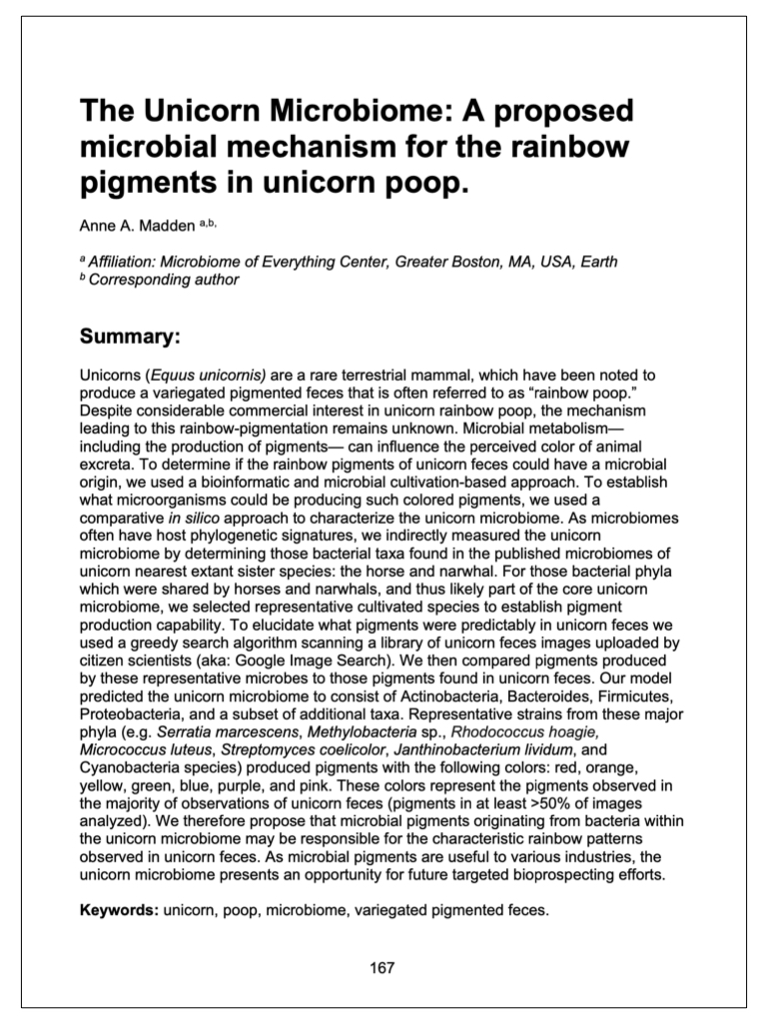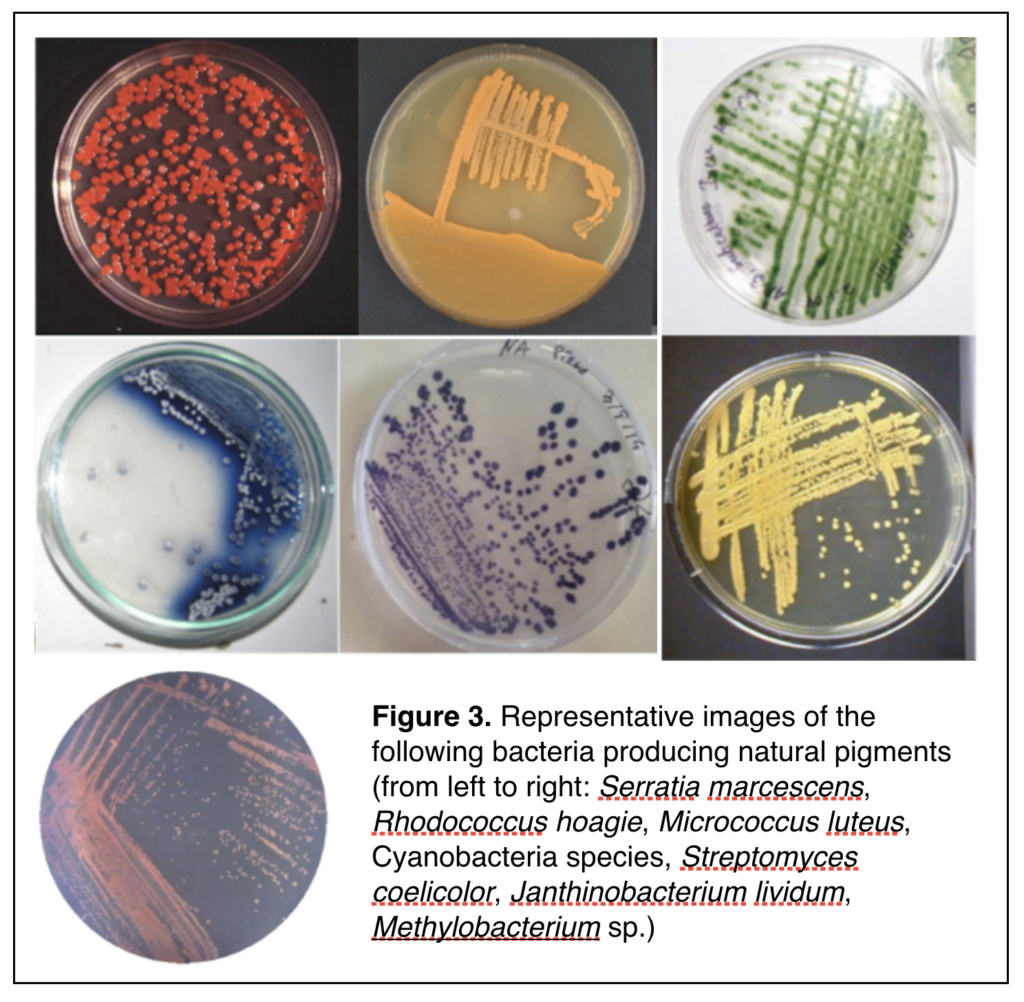The Unicorn Microbiome: A proposed microbial mechanism for the rainbow pigments in unicorn poop.
(Click on the front page image to download the full article)
Summary:
Unicorns (Equus unicornis) are a rare terrestrial mammal, which have been noted to produce a variegated pigmented feces that is often referred to as “rainbow poop.” Despite considerable commercial interest in unicorn rainbow poop, the mechanism leading to this rainbow-pigmentation remains unknown. Microbial metabolism—including the production of pigments— can influence the perceived color of animal excreta. To determine if the rainbow pigments of unicorn feces could have a microbial origin, we used a bioinformatic and microbial cultivation-based approach. To establish what microorganisms could be producing such colored pigments, we used a comparative in silico approach to characterize the unicorn microbiome. As microbiomes often have host phylogenetic signatures, we indirectly measured the unicorn microbiome by determining those bacterial taxa found in the published microbiomes of unicorn nearest extant sister species: the horse and narwhal. For those bacterial phyla which were shared by horses and narwhals, and thus likely part of the core unicorn microbiome, we selected representative cultivated species to establish pigment production capability. To elucidate what pigments were predictably in unicorn feces we used a greedy search algorithm scanning a library of unicorn feces images uploaded by citizen scientists (aka: Google Image Search). We then compared pigments produced by these representative microbes to those pigments found in unicorn feces. Our model predicted the unicorn microbiome to consist of Actinobacteria, Bacteroides, Firmicutes, Proteobacteria, and a subset of additional taxa. Representative strains from these major phyla (e.g. Serratia marcescens, Methylobacteria sp., Rhodococcus hoagie, Micrococcus luteus, Streptomyces coelicolor, Janthinobacterium lividum, and Cyanobacteria species) produced pigments with the following colors: red, orange, yellow, green, blue, purple, and pink. These colors represent the pigments observed in the majority of observations of unicorn feces (pigments in at least >50% of images analyzed). We therefore propose that microbial pigments originating from bacteria within the unicorn microbiome may be responsible for the characteristic rainbow patterns observed in unicorn feces. As microbial pigments are useful to various industries, the unicorn microbiome presents an opportunity for future targeted bioprospecting efforts.
Keywords: unicorn, poop, microbiome, variegated pigmented feces.
More papers like this can be found at The Annals of Praetachoral Mechanics, and also under our journal club tag

